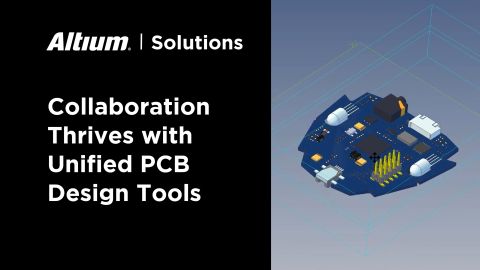Slashing the Spreadsheet: Moving the BOM to the Cloud
As today’s technology becomes more and more complex, the demand for devices that require electrical design is only going to increase, and the ability to deliver a quality product in a short amount of time is critical.
Engineers are continually trying to find ways to shorten product development cycles and design components more efficiently. Plenty of opportunities to be more productive, both mechanical and electrical engineering, exist. One specific area is the creation of Bills-of-Material (BOM) in the development of circuit boards and board systems. ECAD comes into play with that pretty closely.
Traditional Approach
When designing a circuit board, the first task is to create a logic diagram, which describes the interactions between board components. Part A needs to talk to Part B, Part C sends a signal to Part D, and so on. Once the underlying logic is there, the engineer creates a 3D layout, which conveys the arrangement of the board and the placement of the parts. Traditionally, this is on someone’s desktop computer.
During this process, a Bill-of-Material is created to track components on the board and their quantity. The BOM is typically exported as a .csv file and exists separately from the 3D model on the desktop. Engineers communicate changes via emails and spreadsheets.
This process gets the job done, sure, but there is much room for error. Spreadsheets and emails can get lost, or misread. Someone may make a change to the model and forget to relay that information. If an engineer modifies the model after exporting the BOM, the BOM doesn't reflect those changes. It is out of date. The BOM is handed off to a purchasing agent, who can only see the last exported version and not the actual model.
If anything has changed in the model, there’s a considerable risk that the board won't represent the intent of the engineer. Suddenly, you get a board prototype, and it shorts out. That’s a re-spin, which is very expensive and time-consuming.
Another aspect worth mentioning is collaborating on a BOM via email. In most circumstances, that .csv files is fired off to a purchasing agent, suppliers, and potentially a customer. What happens next is mayhem. Everyone starts commenting and marking up the file. No participant can see each other’s feedback. Then everyone is passing around files. There is no consolidated view of suggested changes. Getting aligned on what to do next requires a ton of work, delaying the development process even more.
Novel Approach
More and more companies are migrating their enterprise workloads to the cloud, and there are plenty of benefits for engineering organizations. There is, of course, an extra layer of security with this technology, but In the case of ECAD, the cloud can offer several other solutions. By putting board designs and layouts in the cloud, engineers make this information accessible to everyone at all times.
Engineering staff, as well as everyone downstream, has access to a model that is unambiguous and always up-to-date. There are several benefits to having such broad access to the Bill- of- Materials in particular. In addition to in-house collaboration, customers and suppliers could also view the document and communicate any changes necessary.
If all the necessary data is in the cloud, the model and the BOM are synchronized. The BOM reflects any changes to the model. This associativity between the model and BOM means it’s pretty much a guarantee that you’ll always order the right parts, and avoid a potential re-spin. In the traditional approach, much time is spent asking questions and clarifying issues. It’s back-and-forth, back-and-forth. So in addition to potentially ordering the wrong materials, much valuable time can be lost.
Beyond the issue of gaining access to a BOM that is always accurate, there are significant advantages when collaborating in the cloud. The engineer, the procurement agent, supplier, and even the customer can all view the same model and BOM. Furthermore, they can all make comments and markups, suggesting changes. Additionally, all participants can see each other’s work. A process using a holistic, collaborative view is significantly faster than trading .csv files back and forth, hoping that you have the right version this time. This approach doesn't just avoid error avoidance; it gets to making better decisions faster. It is about designing better products in less time.
Summary
The Bill-of-Materials might be a relatively mundane part of the product development cycle, but getting the right board the first time is mainly dependent on it. If you send a board BOM to a supplier that is wrong, you lose time and money with re-spins. With the BOM in the cloud, adjustments can be made without the worry of updating a separate document, making the process a whole lot smoother and everyone's’ jobs a lot easier.












